News | Press
#A00 A brand new monastery
- Machine: B100;
- Published in: Costruzioni;
- Author: Aurelio Coppi;
- Date: 9/2001
Mortar was also produced with local raw materials, such as tufa and pozzuolana, stones were placed as similarly as in the original form. This "artistic" care was however completed by high technological materials level and techniques used to restore walls' safety. Carbon fibres supplied by the ATP company of Angri, Salerno were largely used, as 6 cm wide bands applied to the top of wall archs.
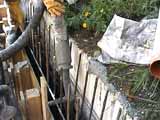 |
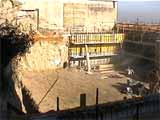 |
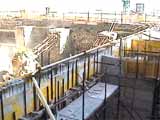 |
Pouring concrete in beams and walls |
||
The particular conditions of the wall base in some cases required the construction of large size reinforced concrete consolidation bases to a depth of 1.5 m, supported by a series of concrete piles dug deep into the ground. These works were executed with screw pumps enabling concrete conveying through 120 metre long pipes. A great rainwater collection tank was discovered during restoration works and will be used for water storing used for fire fighting.
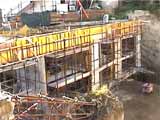 |
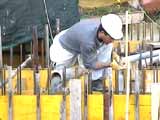 |
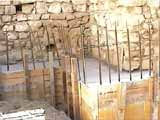 |
The archive and access roads
The four levels building used for the archive certainly required a particular effort due to its characteristics and by its location : in the middle of the monastery. Precious antique texts and high value historical documents will be stored there: Therefore, works were particularly intense and included many concrete pourings altogether 1500 m3 conveyed material. All floors were adapted to safety standards (the archive is generally extremely heavy), safety frames were used and a sophisticated air conditioning system was mounted there. All access roads to the monastery have been restored respecting the original structure. It's been necessary due to the bad state of roads before works and because they've been used by building machines and have been consequently damaged.
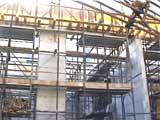 |
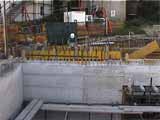 |
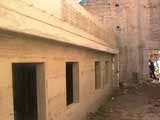 |
Concrete conveying
The pumps used for concrete conveying in the jobsite of Naples' Suor Orsola Benincasa Institute are screw pumps. Manufactured by Bunker from Casandrino, Naples, they are fully hydraulic and are equiped with a progressive output regulation system guaranteeing a uniform pumping without pressure changes that might jeopardise pumping quality. These extremely simple pumps operate through a one principle screw and a two principle natural rubber stator and a feeding screw.
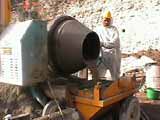 |
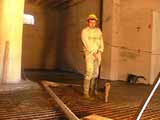 |
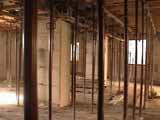 |
The B100 under a mixer |
Pouring the floor screed |
Pouring the floor screed |
When the rotor turns into the stator, concrete enter cavities formed each 180° and the material is regularly conveyed throug hoses. The feeding screw conveys concrete from the hopper to the stator and prevents mixes from sedimenting. Besides being used for traditional concrete or spritz beton, these pumps can also be used to convey and spray common mortars, thixotropic restoration premixed mortars, to inject cement slurries,... The B100 guarantees a 7 m3/h output at a 25 bar pressure, it can pump up to 25 mm grain size. Equiped with a vibrating screen, the pump is powered by a 60 l/min hydraulic power pack with an orbital hydraulic motor. The pump power enables carrying material to over 60 metres with 30 metre level differences.